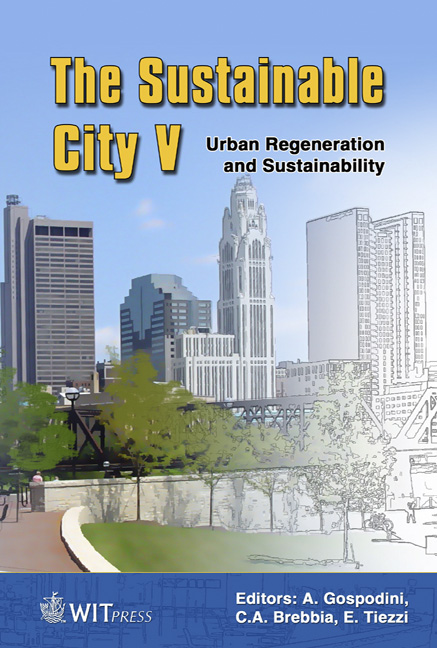Striving For A More Sustainable Belgian Dwelling Stock
Price
Free (open access)
Transaction
Volume
117
Pages
10
Page Range
335 - 344
Published
2008
Size
1,279 kb
Paper DOI
10.2495/SC080321
Copyright
WIT Press
Author(s)
K. Allacker, F. De Troyer, C. Spirinckx, L. De Nocker, A. Vercalsteren, B. Tomasetig & K. Putzeys
Abstract
A four-year project (SuFiQuaD) started in 2007 to optimize the Belgian dwelling stock. The optimization focuses on environmental impacts, financial cost and quality aspects. The aim is to evaluate the whole life cycle of representative housing types and formulate recommendations for improvement. In a first phase the methodology has been developed and is now being applied to a limited selection of extreme dwelling types. Based on this application, the methodology will be revised and applied to representative dwelling types. This paper elaborates on the developed methodology and the first results of the implementation. The basic approach for the optimisation is to search for the highest marginal quality improvement for the additional cost. The cost consists of different aspects: initial financial cost, initial environmental cost, life cycle financial cost and life cycle environmental cost. The environmental cost is calculated by translating the environmental impact – estimated based on life cycle assessment – into financial terms. Finally, a quality evaluation is included. This is considered as an essential part of the analysis since a good quality is a requirement for sustainability, but moreover, the inclusion of the evaluation of the performance of a building enables comparative analysis. Keywords: life cycle assessment, life cycle costing, multi-criteria analysis, optimisation, Pareto, dwelling, monetary valuation, marginal valuation, Belgium, element method, quality assessment.
Keywords
life cycle assessment, life cycle costing, multi-criteria analysis, optimisation, Pareto, dwelling, monetary valuation, marginal valuation, Belgium, element method, quality assessment.





